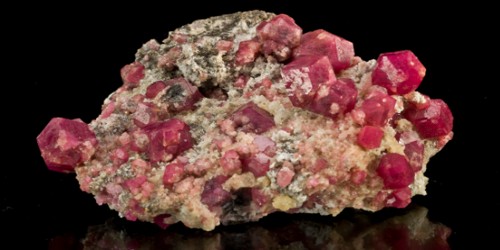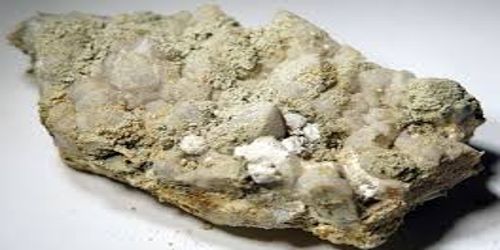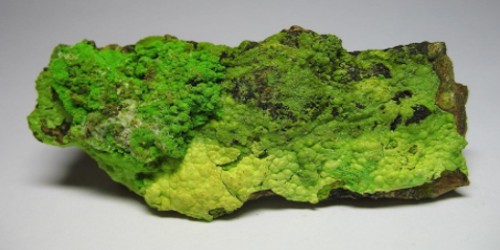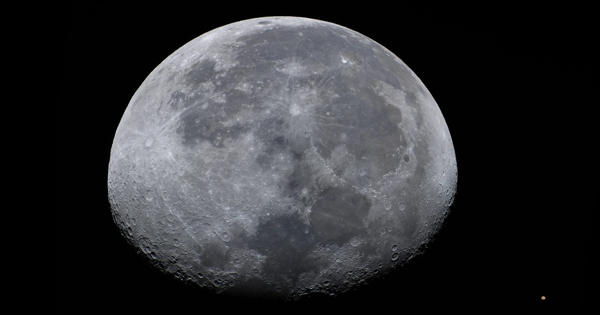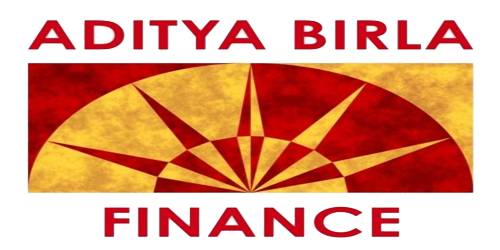Grossular is a calcium-aluminum species of the garnet group of minerals. It is a mineral of the garnet group, consisting essentially of calcium aluminum silicate. It has the chemical formula of Ca3Al2(SiO4)3 but the calcium may, in part, be replaced by ferrous iron and the aluminum by ferric iron.
The name grossular is derived from the botanical name for the gooseberry, grossularia, in reference to the green garnet of this composition that is found in Siberia. Other shades include cinnamon brown (cinnamon stone variety), red, and yellow.
General Information
- Category: Nesosilicate
- Formula: Ca3Al2(SiO4)3
- Crystal system: Cubic
- Crystal class: Hexoctahedral (m3m)

Properties
Grossular has many color possibilities and is probably the most colorful of the garnets. The orange variety is the most common and specimens of orange grossular crusts are prized by many collectors. The green variety is called tsavorite and is occasionally cut as a gem.
- Color: light to dark green, light to dark yellow to reddish brown, occasionally translucent to opaque pink.
- Cleavage: none
- Fracture: conchoidal to uneven
- Mohs scale hardness: 7 to 7.5
- Luster: greasy to vitreous
- Specific gravity: 3.61 (+.15 -.04)
- Polish luster: vitreous
- Optical properties: Single refractive, often anomalous double refractive.
Occurrence
In contact and regionally metamorphosed calcareous rocks, or rocks which have undergone calcium metasomatism; in some schists and serpentinites. In geological literature, grossular has often been called grossularite. Since 1971, however, use of the term grossularite for the mineral has been discouraged by the International Mineralogical Association.
Grossular is a gemstone. It is believed that these garnets form from the metamorphism of impure siliceous limestones.
Information Source:
